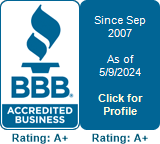5 Ways to Improve Your Quarterly Estimated Tax Payments
Do you or your business need to pay quarterly estimated taxes? For most businesses, these tax obligations are not only mandatory but also help keep their tax bill manageable. But not every business has success managing their quarterly payments right from the beginning. If you've overpaid, underpaid, or scrambled to correct your quarterlies, here are a few tips to improve how you handle them.
1. Work With an Accountant
For most businesses, determining the right amounts to pay and when isn't as easy as simply looking at last year's tax forms. You may be growing your business and expecting higher earnings. Or you might have a big expense or two planned that will result in big tax deduction changes. Or you might be able to take advantage of different tax strategies that can lower your taxes overall.
If you've had trouble getting the quarterly amounts right on your own, now is the time to consult with an accountant about them. Many accounting professionals also provide reminder services for quarterly due dates and are even willing to handle the physical payment if you need it.
2. Check Up During the Year
Whether you decided how much to send each quarter or you received recommendations from your accountant, don't consider that the final word on quarterlies. Things can change during the year, and errors can happen. So, schedule some time during the midyear to review how your quarterlies are going.
At this appointment with your bookkeeper or accountant, you should accomplish several things. First, verify that your record of payments so far matches the IRS' record provided through your online taxpayer account. Second, ensure that you have reconciled any taxes held in remittance accounts, such as sales and employment taxes. Finally, check on how your earnings projections are aligning with actual income.
3. Don't Wait to Pay
Each quarterly amount is due at a certain time. Traditionally, these deadlines are April 15, June 15, September 15, and January 15. However, you don't have to wait until these dates to actually send in money. You may opt to pay two, three, four, or more times between the due dates.
Because many businesses don't have the liquid cash to make a large payment when it's due, more frequent small payments could be easier to keep up. You might schedule these on a regular basis, such as monthly, or make irregular payments when cash is flowing well.
4. Include Quarterlies as Payables
Do you fully utilize your accounts payable system? If not, now is the time to start. An accounts payable system allows you to enter items into your software that will be due in the future and have them as a permanent part of your budgeting process. You can enter items with due dates as far out as you would like. A business might create an account for taxes payable on each quarterly date, making planning easier.
5. Consider a Separate Bank Account
Entrepreneurs and very small businesses often benefit from setting aside money for their tax obligations in a separate bank account. Because one-person businesses and independent contractors often run an operation with a much tighter budget and lower profit margin, it can be much better to put aside money as you earn income. Using a separate bank account keeps this money from being spent on other needs.
Where to Get Started
Could your quarterly payment process be improved by any of these changes? If so - or if you're not sure - start by meeting with the business accounting team at Quality Bookkeeping Services Inc. We will help you assess your processes and identify ways that you can make quarterlies go smoother for yourself. Call today to make an appointment.













